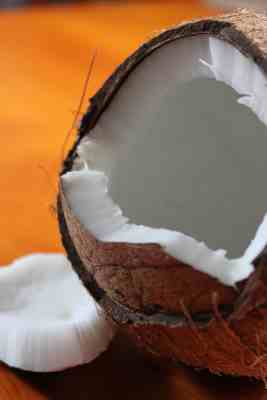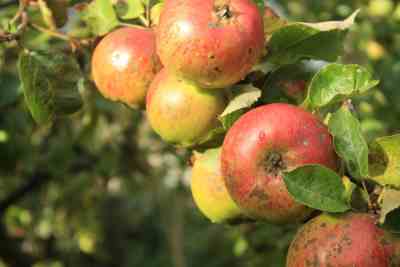Nightshade Foods List: What Nightshades are, Health Benefits and Concerns
Despite its name, this deciduous shrub isn’t a rose but a member of the mallow family Malvaceae. Other popular names for the Rose of Sharon include Chinese hibiscus, Althea tree, Korean rose, or rose mallow. The botanical name Hibiscus syriacus comes from the fact that it was collected from gardens in Syria. However, the flowering plant originates in China and the Far East.
The Rose of Sharon is a type of hibiscus shrub or small tree that produces beautiful red, white, pink, light blue, or lilac flowers. Many gardeners prize this flowering shrub because it produces stunning flowers in late summer when few shrubs are in bloom. Caring for Rose of Sharon plants is also very easy and they survive most winters well.
[table id=1 /]
In this article, you will find out tips for growing and caring for Rose of Sharon shrubs. You will also learn why this hardy variety of hibiscus thrives so well in many gardens.
Rose of Sharon (Althea Plant) Overview
According to some studies, the Rose of Sharon (Hibiscus syriacus) is one of the most common garden shrubs in the world. (1)
The Rose of Sharon is a hardy shrub that has dense foliage vibrant stunning flowers. One of the reasons why these flowering shrubs are so popular is that they withstand drought, poor watering, heat, humid conditions, and poor air quality.
This makes the Hibiscus syriacus a great addition to any garden if to want colorful shrubs, a small blooming tree, or a privacy hedge in the summer.
What does Rose of Sharon look like?
Although it is a shrub, the Rose of Sharon looks like a small bushy tree which is why it’s also called the Althea tree.
Leaves appear on the plant around the end of May with blooms appearing August. Gardeners plant the Rose of Sharon as a hedge or foundation shrub or to give gardens a splash of color at the end of summer and early fall.
The branches of the hardy shrub grow upright and, with the proper pruning, you can turn them into large attractive garden shrubs.
A Rose of Sharon tree can grow between 10 and 15 feet tall (3 – 4.5 m). These deciduous shrubs can also be trained to create hedges with shrubs growing between 5 and 8 feet tall (1.5 to 2.5 m).
Rose of Sharon Flowers
The flowers of the Rose of Sharon are definitely its most striking feature. These late bloomers give gardens a dash of white, red, lavender, or purple thanks to their attractive blooms.
As with most varieties of flowering hibiscus plants, the flowers look as if they are made from crepe paper. Some hibiscus cultivar flowers are single flowers that look like trumpets with a protruding stamen. Other varieties of Rose of Sharon plants have doubled flowers that give the plant lilac, pink, white, or purple bushy blooms.
Although Rose of Sharon flowers are very beautiful, they only last a day or two, so they don’t make good cut flowers. However, if you want to use Rose of Sharon cuttings indoors, you can place shoots with mature buds in a vase of water where they may flower.
The best way to ensure the largest possible number of flowers on a Rose of Sharon bush is to prune heavily in the spring or late fall after they have flowered.
Varieties of Hibiscus Syriacus
There are a number of types of Rose of Sharon bushes that bloom from August to October. If you are landscaping your garden, strategically-placed hibiscus shrubs can provide wonderful color and privacy in your garden.
Here are some common Rose of Sharon cultivars with a description of their blooms.
White Chiffon – Rose of Sharon
There are a number of types of Chiffon hibiscus shrubs that produce different colors of flowers. The White Chiffon is a popular variety that produces blooms 4″ to 5″ (10 to 12 cm) in size with 2 rows of brilliant white petals.
Other varieties of Chiffon Rose of Sharon plants produce pink, lavender, or multi-colored flowers. These Rose of Sharon shrubs are popular for their thick foliage and long-lasting blossoms.
Another popular type of Rose of Sharon variety is the Blue Chiffon with double flowers that are exceptionally beautiful.
Aphrodite Althea – Hibiscus Syriacus
The Aphrodite variety of Rose of Sharon produces flowers in varying shades of pink. These hibiscus Althea trees make for great specimen plants and grow to around 9 feet (2.7 m) tall. Flowers from Aphrodite hibiscus shrubs look like pink ruffled blooms with a red spot in the center.
Minerva – Rose of Sharon
This is also known as Minerva Althea and this hibiscus shrub produces an impressive display of light pink to purple flowers. Each flower has a striking stamen that is surrounded by a deep red color. This hardy hibiscus shrub is ideal to prune into a protective hedge or train to grow erect into a Rose of Sharon tree.
Hibiscus Syriacus Oiseau Bleu
This Rose of Sharon shrub is a very popular cultivar that produces stunning blue or violet flowers (also called Blue Bird). As with many hibiscus flowers, these flowers have a protruding white stamen with a contrasting burgundy center. This Rose of Sharon blooms from the middle of summer to the end of the fall. It is often used as a flowering hedge due to its dense foliage.
Rose Mallow – Hibiscus Syriacus Duc de Brabant
This upright Rose of Sharon shrub produces vibrant pink and deep red flowers near the end of summer. Leaves start to appear on this hardy hibiscus cultivar around April and the shrub will continue flowering until late fall. Like most Rose of Sharon varieties, this woody shrub can withstand temperatures as low as -4 °F (-20 °C).
Antong Two Lil’ Kim – Hibiscus Syriacus
This is a dwarf variety of Rose of Sharon that is easy to grow and flourishes just as well in hot conditions as it does in poor soil. The Sharon bush produces flowers with 5 large petals that have a contrasting center.
The most common type of flower on this dwarf hibiscus bush is white with a deep burgundy center. This Rose of Sharon variety flowers from mid-summer to late fall. The dwarf Rose of Sharon grows between 3 and 5 feet (1 – 1.5 m) tall. It is also easy to grow this shrub as it propagates well from cuttings.
How to Grow Rose of Sharon Bush
It is very easy to grow all varieties of Hibiscus syriacus because they withstand harsh conditions like frost, drought, heat and dry soil. However, ideally, Rose of Sharon plants thrive in moist soil that drains well.
You can also grow hibiscus shrubs from Rose of Sharon seedlings. Each Sharon bush produces lots of seed pods that can take root easily. It’s because of this that the Rose of Sharon is considered an invasive plant.
When to Plant Rose of Sharon
If you are adding Rose of Sharon shrubs to your garden, you should plant them in the spring or fall. Because they are a good hedge plant, plant them 6 to 10 feet (1.8 – 3 m) apart depending on your landscaping goals.
You can also grow Rose of Sharon seeds by planting the seeds outdoors in late winter about 12 weeks before the last frost date. They should be planted in sunny spots and require deep watering.
How to Care for Althea Plant (Rose of Sharon)
Let’s look at the best ways to care for your “Rosa Sharon” to ensure healthy foliage and a large number of flowers.
Light requirements for Rose of Sharon growth
Rose of Sharon shrubs grow well in most environments; however, they need full sun to grow best. Planting althea plants away from shaded areas will help prevent fungal diseases due to too much moisture.
The best soil for growing Rose of Sharon bush
To ensure healthy growth, make sure that you keep the soil moist and well drained. Even though Rose of Sharon hibiscus plants withstand drought and heat, they should be watered regularly to keep them growing well.
Hibiscus shrubs grow well in acidic soil that is between 5.5 and 7.5 pH.
Ideal temperature conditions
The Rose of Sharon will bloom well with colorful flowers when it gets full sun and occasional shade.
Which type of fertilizer to encourage Rose of Sharon plant growth
The best way to provide the needed nutrients for your althea bush is to work in organic compost around the roots. Providing a good layer of compost once a year should be enough for healthy growth.
If you choose a commercial fertilizer, Sharon shrubs need one that is high in potassium, medium nitrogen levels, and low in phosphorus.
Watering your Althea plant for best growth
During the summertime, you should care for your Rose of Sharon by watering it daily. You may have to water it twice a day if the weather is very warm. If you are growing your Althea shrub in a container, then appropriate watering is especially necessary.
Even though Rose of Sharon is a hardy plant and can endure drought, they thrive when they get enough moisture. To help improve soil moisture for your Hibiscus syriacus shrub, place a 1-inch (2.5 cm) layer of mulch around the stem.
However, you should avoid overwatering your plant as this can result in root rot.
Rose of Sharon care tips for winter
The hardy Rose of Sharon tree or shrub will withstand winters when the temperature drops below zero. Usually, shrubs lose their blooms in late fall and early winter. In colder regions, the shrub will die back to the ground and regrow in the spring.
To care for your hibiscus rose during winter, cover the root ball with plenty of mulch. This will help to protect the roots ready for them to regrow in the springtime.
When and How to Prune Rose of Sharon Plants
The best time to prune a Rose of Sharon is in early spring, just as the temperature is warming. This can stimulate the growth of new branches which will result in a greater number of flowers.
You can also cut back branches from your Rose of Sharon shrub just before winter. This helps to encourage larger flowers when the plant blooms in late summertime.
When pruning at the start of spring, prune branches about a ¼ inch (about ½ cm) above new leave nodes.
If you trim your Rose of Sharon shrub branches to just 2 or 3 buds, you will see larger blooms on your plant in late summer, early fall.
Because Rose of Sharon can be an invasive plant, you should trim off dead flowers and remove the seed pods around October time. It is also good to remember that some types of Rose of Sharon such as White Chiffon, Aphrodite, and Minerva are sterile and don’t produce seedlings.
How to Propagate Rose of Sharon Plants
You can grow Sharon shrubs from seeds near the end of winter. Put the seed in the soil about ½ inch (1.5 cm) deep, cover, and water well.
Transplanting Rose of Sharon
Depending on where you planted your Rose of Sharon or if it is growing in a container, the question of transplanting it can crop up.
You may find that your Sharon bush needs to be in a sunnier place or it could have outgrown its container.
As a rule of thumb, you should never move your Rose of Sharon in the winter or summer. Transplanting a Rose of Sharon during these seasons stresses the plant too much and can kill them.
The best time to transplant a hibiscus shrub is in the fall so that it has time to develop healthy root systems before new growth.
When transplanting a Rose of Sharon plant, dig up as much of the root system as possible without damaging them. Place in a hole in its new location, making sure the root ball is at a similar depth. Pat soil around the root ball, water, and cover with a layer of mulch to keep the moisture in.
Common Problems with Hibiscus Syriacus Plants
There are few problems that can afflict Rose of Sharon shrubs or trees. Most varieties of the plant tend to be resistant to disease. They also continue to grow even in unfavorable conditions which makes them excellent urban garden choices.
The most common pest that can harm a Rose of Sharon plant is the Japanese beetle. These garden pests usually appear from the soil as adults in June and can quickly attack Rose of Sharon shrubs before they get a chance to bloom.
If you notice these beetles on your plant, shake them off into a container filled with soapy water to kill them.
You can also sprinkle diatomaceous earth (DE) around the base of your Rose of Sharon as a nontoxic, but effective insecticide. You will need to apply once a week for best results. Remember that DE isn’t effective if it gets damp, so, reapply the powder when the soil has dried out after watering or rainfall.
Find out more about how to use diatomaceous earth to protect your plants from bugs and other creepy crawlies.
You can also find out how to make a bug repellent for your hibiscus shrub using neem oil.
Where to Buy Rose of Sharon Plants
To add a splash of color to your garden or have a flowering hedge, you can buy Rose of Sharon shrubs.
Various online stores have many varieties of hibiscus shrubs with pink, white, blue, lavender, or red blooms. Some varieties of the plant have already been cultivated into a small Sharon tree ready for planting in your garden.
Most local plant nurseries or garden centers also stock a wide range of Rose of Sharon hibiscus plants.
Before buying a hibiscus Rose of Sharon, it’s good to consider your landscaping needs and type of bloom you want in July to September. Some Rose of Sharon plants are good for privacy hedges, others look beautiful as standalone specimen plants, while other blooming shrubs are good against a wall.



